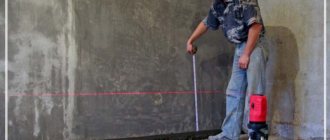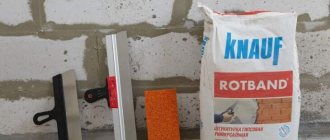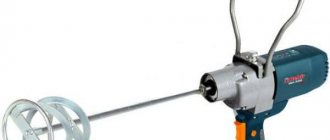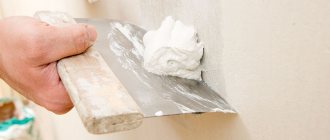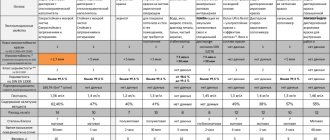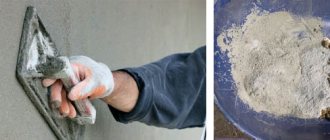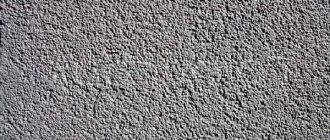Knauf Tiefengrund is a ready-to-use, quick-drying, deep-penetration, vapor-permeable primer made on the basis of a polymer dispersion. It is moisture resistant, does not contain solvents, is odorless, and has a pronounced antiseptic effect. The color of this primer is white, matte.
You can buy Knauf Tiefengrund primer in our store at a very attractive price:
- To favorites
- Compare
- Quick view
Application area of Knauf Tiefengrund primer
This composition is used both indoors and outdoors. Specific materials are:
- Plasterboards and other substrates capable of absorbing moisture;
- Screeds (from cement and gypsum);
- Plaster (cement and gypsum based);
- Concrete;
- Plaster putty.
Another method of application is to apply a primer before sculpting, for better adhesion of materials.
Area of use
Primers are used to improve adhesion properties, as well as to improve the strength of the base, which is processed using the material. For each type of soil there is an instruction that specifies the composition, material consumption per m2, as well as for what work, external or internal, it can be used.
Concrete contact primer is used for the following purposes:
- The properties of the primer make it possible to use it before screeding or self-leveling floors, which is why it is often called a primer for concrete floors
- Primer for concrete is used to treat surfaces before finishing with plaster or putty.
- To reduce the porosity of plasterboard slabs before gluing trellises or laying tiles
- The composition allows you to use betokontakt before whitewashing the ceiling
The technical characteristics of the concrete primer can be used for work with non-absorbent surfaces. These can be bases coated with varnish or paint, or tiled. The most important thing is that for this there is no need to dismantle the old coating, because a penetrating primer is applied over these materials, forming a rough surface that adheres well to the new finishing elements. It is worth clarifying that the concrete contact primer has an environmentally friendly composition, and this allows it to be used in any room. Although GOST specifies what composition the primer should have, many manufacturers may deviate slightly from the list of elements, although this does not in any way affect the quality of the material.
Let's look at the technical characteristics and properties of the primer:
| Drying process | Very fast compared to other types. On average, after 2.5 hours you can continue finishing work |
| Moisture resistance | After drying, the soil forms a film that repels water and thereby protects the base from premature destruction |
| Life time | Many manufacturers indicate a service life of 80 years. However, for this, the instructions for applying primer must be followed. |
| Application method | It is possible to use both manual and mechanical options |
| Composition distribution | Pigments that may be included in the primer help ensure uniform application |
Characteristics of Knauf Tiefengrund primer
Before getting acquainted with the benefits of the product, it is very important to familiarize yourself with the technical characteristics in order to make sure that this substance is suitable for you.
- No odor – no odor at all, even a subtle one. Accordingly, the product can be used indoors.
- Transparency – the substance is absolutely colorless. This can be considered a plus, since subsequent painting or pasting will not be affected.
- Resistance to water vapor - has vapor permeability.
- Relatively fast drying - one layer dries in 2 to 3 hours.
- Frost resistance – the product is frost-resistant, as it can withstand down to -40℃.
- Low product consumption - 0.1 kg is consumed per 1 m².
- High wicking ability - the product penetrates into the material up to 10 cm.
Certification
The manufacturing company Knauf has a corresponding certificate confirming the high quality of Tiefengrund soil. The presence of a certificate indicates that the necessary research and control measures were carried out, as a result of which it was established that the product complies with GOST.
The following activities were carried out to obtain certification:
- material was selected and underwent the necessary research in laboratory conditions;
- production processes and manufacturing technology were analyzed;
- a certification assessment was obtained based on certain indicators.
After all the necessary control measures have been carried out, the products received markings and a certificate.
Advantages of Knauf Tiefengrund
Thanks to such an extensive list of technical characteristics, it is necessary to get acquainted with the list of advantages of the product.
Why you should choose the Tiefengrund Knauf primer.
- Completely safe for humans - it does not release hazardous toxic substances into the air, so the primer is considered completely safe for humans. That is, you can work with the substance without wearing a respirator.
- It does not emit any odor - which once again confirms that work can be carried out without protective equipment. The only recommendation is to wear gloves.
- No solvents in the solution.
- Fast drying time - literally a couple of hours after application, you can begin further surface treatment.
- Protects against self-destruction.
- A good antibacterial agent - you don’t have to worry about fungus growing on the walls.
- It withstands moisture well - can be used in bathrooms and other rooms with high humidity levels.
- Increases adhesion of materials.
- Withstands temperature changes.
Advantages
This primer mixture has many advantages:
- absolutely safe for people, does not release any caustic compounds into the air;
- colorless liquid without any odor;
- does not contain solvents;
- one 10 kilogram bucket is enough to process approximately 100 m2;
- Each stage of production is under the independent and internal control of the company. The primer has an appropriate certificate in accordance with GOST R;
- significantly increases the adhesion rate of various substrates;
- makes the surface much stronger;
- dries very quickly;
- does not interfere with air exchange;
- the walls remain vapor permeable;
- significantly saves the amount of finishing;
- is not afraid of temperature fluctuations and changes in air humidity.
Features of application
Application of the primer can be done in 3 steps.
Let's look at them in more detail:
- Preparatory step - at this stage it is necessary to clean the surface from dust, dirt and other residual materials. In addition, it is necessary to repair all the irregularities, but this is a relative task. Some professionals repair holes and pits with a thick coat of primer.
- Mixing the solution - before using the primer, you need to mix the solution, or open the jar and create a liquid emulsion. Do not forget that the instructions indicate exactly how to dilute the solution. Usually these are 1:1 proportions.
- Application – after the preparatory work, you can begin application. You can use a roller, brush, spray or spray gun. If you apply the solution in two layers, do not wait for the first to dry - immediately start the second.
Consumption
It is all these signs that determine how much primer you spend per square meter of surface. This indicator is most often indicated on the packaging, because this is the most important characteristic that allows you to know how much material it costs to purchase, so as not to run around for additional materials.
The consumption of deep penetration primer depends on the following factors:
- the amount of primer used is affected by the material of the surface on which the material will be applied (metal, wood, stone);
- the composition of the primer itself, namely its elements, their proportion, which is directly specified by the manufacturer;
- the amount of material used is also affected by the type of further dye, glue and building material;
- Another important factor is the time of year and weather conditions.
All these factors in one way or another affect the future consumption of material. But there is still one parameter that affects the consumption rate - this is the method of applying the material, as well as the tools themselves that are used during work.
The tools you use to apply the primer have a direct bearing on how much primer you will use on the selected area. The substance itself is sold in containers of different sizes, you select the one you need.
The primer can be applied to a vertical surface using special tools. A roller is a fairly convenient way to apply material to vertical walls.
Roller
The most common option for painting hard-to-reach areas is a brush. The brush is used when applying material to seams, when processing corners and hard-to-reach places;
Brush
Sprayers are also used when applying primer.
Spray
The primer is available in a liquid version and has a transparent composition and can be used before gluing wallpaper; if you are processing wood, you should choose a moisture-proof material.
It contains pigments of a darkish color, which allows you to clearly see the boundaries of application when applying it, but you should understand that when using this type of primer, you should remember one rule: in no case should the primer be darker than the topcoat.
If it is metal, then 80-100 g per square meter is enough. You should know that when working on metal, it is necessary to use a primer without acrylic, this is due to the fact that rust does not appear on such a primer. But before applying primer to metal, it must be carefully prepared for use.
If before applying the primer the metal surface was used quite often, then there is clearly fluffy rust left on it, then you can easily get rid of it using the right tools (brush).
This is necessary so that the old metal does not absorb the primer, which means that if you do not treat the material in advance, you can spend twice as much paint and varnish materials during further processing. In order to treat a metal surface with a primer, you should choose one based on resins.
It can be used on both metal and concrete. 80-100 g per square meter is considered the most minimal indicator among all available bases. The consumption rate for deep penetration primer per 1 m2 based on acrylic is 120-150 g per square meter.
Acrylic primer easily and simply dissolves in water; you can buy it in the store in powder form or in the form of a concentrated liquid.
In its structure, such a mixture will resemble a simple whitewash, therefore, there is no point in using it on dark surfaces. This primer is good for painting with acrylic paints. Can be used both inside the house and outside.
The use of a primer before applying the base material to the surface is not the case. If you neglect this advice, then you can consider that the money spent on finishing materials is thrown away.
There are certain calculation rules based on which you can determine how much primer you will need to treat a particular room. The first thing to do is calculate the total area of the room, but at the same time take into account its properties.
It is worth understanding that walls, floors and even ceilings have different density characteristics, therefore, it is worth calculating for each surface separately. The primer packaging indicates several indicators of material consumption.
Approximate material consumption values:
the primer based on acrylic can be consumed with an approximate value of 110-160 g / square meter;
Acrylic
the Knauf company's primer, which is used for walls, can be consumed from approximately 50 to 130 g/square meter;
Knauf
The approximate consumption of deep penetration primer (in general) is 100 g per square meter.
What criteria should you use to choose?
When purchasing materials, you can make a mistake, and in the case of primers. It is worth understanding what parameters are used to select a mixture.
The important ones are:
- Areas of use. Before purchasing, you must immediately note where the work will take place. These can be porous and smooth coatings, movable and fixed structures. Operation can take place in external or internal conditions, on different surfaces in the form of metal, plastic, polyvinyl chloride or concrete. This primer works great for this.
- Atmospheric and climatic features. In this case, temperature conditions, humidity, precipitation, the possibility of mechanical damage and much more are taken into account.
- Compositional and technical properties. Please read the instructions included with your purchase carefully.
Reliable manufacturers of concrete contacts
There are companies on the building materials market that have long established themselves. The primers from these manufacturers differ in composition, purpose and price. The cost is quite affordable: for 5 kg you will have to pay only 300-600 rubles.
Axton
This company produces a wide range of mixtures. The first representative is a high quality dry primer. It is used to treat any surfaces. Before use, add the required amount of water to the concrete contact and stir. The advantage of this material is its high drying speed: at room temperature, the composition sets in 2 hours. A small consumption is declared (300 g per 1 m2), but in reality it turns out to be more.
Ceresit
This water-dispersion primer differs from others in that it is best to apply it with a brush; using a roller is not recommended. It covers smooth surfaces; this concrete contact contains fine-grained quartz sand. The primer must not be diluted with water: high humidity and liquid that gets on the treated base will lead to a loss of properties of the material. It is used only for indoor work.
Knauf
The most famous brand in the domestic construction market. The main components of this material also include fine sand fractions. It is generally accepted that this primer has the best characteristics among other competitors. They make it possible to obtain ideal adhesion to glossy surfaces, such as glass. The first layer under normal conditions dries in an hour; final hardening takes approximately 4 hours. Consumption - about 350 g per 1 m2.
Prospectors
This primer is a domestic manufacturer, but the place of “birth” does not detract from its advantages. The primer mixture is made on the basis of latex. Concrete contact is used for surfaces that do not absorb moisture well - concrete tiles. Due to its low price and low consumption (200 g/m2), the composition is often used when installing self-leveling floors. The product does not require thorough stirring: the contents of the jar are simply shaken.
Optimist
Almost the only company that produces not only a decent primer for treating indoor surfaces, but also high-quality concrete contact intended for outdoor use. These compositions are ideal for preparing bases before applying gypsum, polymer material, and before facing with cement slabs. The minimum drying time for the primer is 3 hours, the maximum is 4. Material consumption is 300 g/m2.
Information about concrete contact: consumption, features of surface preparation and its application - the topic is necessary, but not complicated. Those who have become closely acquainted with the universal material have already become convinced of this. For example, the master from this video:
Storage conditions
The product is produced in white plastic buckets and is closed with an airtight lid, which ensures safe storage of the product.
- In addition, a metal handle is soldered to the lid, which makes it easy to carry.
- In stores you can find packaging in 5 or 10 kg. The cost varies from two hundred to nine hundred rubles.
- The shelf life is 12 months.
The manufacturer recommends storing the product in a cool place, away from sunlight (including away from heaters and heating systems).
An interesting fact that cannot be ignored is information about the freezing of the substance. What does it mean? It is no secret that the primer is frost-resistant, however, the manufacturer allows freezing up to 5 times.
It is important that defrosting occurs gradually and by itself. It is strictly forbidden to use microwave ovens and hair dryers - this can lead to damage to the product. Pay attention to the labels and the recommendations that are written there!


